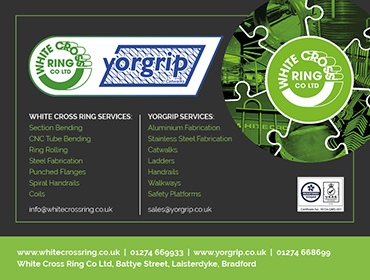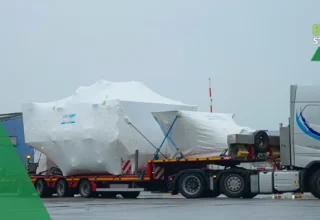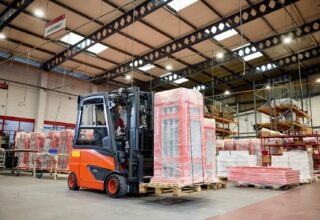
As the world grapples with the urgent need to combat climate change, industries are building decarbonisation strategies to help them reach net zero emissions. The manufacturing sector, known for its substantial carbon footprint, is no different.
But, what’s all the fuss about? Why should organisations take carbon emissions seriously?
There are several compelling motivations for manufacturing businesses to cut carbon emissions.
Here are just a few of them:
Manufacturing is fossil-fuel intensive, and therefore, expensive
In 2022, the industrial sector accounted for 33% of total US energy consumption, 76% of which came from manufacturing. In particular, metal production requires massive amounts of energy for mining, smelting and refining. For example, each tonne of ‘new’ steel has typically required about 6 MWh in the process of getting from iron ore to a finished steel product. This leads to steel production making up approximately 10% of global emissions.
Energy prices are continuing to rise, attributed to several factors, such as the wake of the COVID-19 pandemic, growing international demand, the Russian invasion of Ukraine, and changing climate conditions. Therefore, it has been argued that it makes business sense to re-think manufacturing energy sources, improve operational efficiency, and in turn, decouple environmental impacts from economic growth.
There are multiple options for reducing the energy- and carbon-intensity associated with metal production, including transitioning to greener energy sources, making existing technology improvements and developing novel, more sustainable approaches.
For example, multiple innovative technologies are under development for steel production: top gas recycling, hydrogen reduction, smelt reduction, steel electrolysis, paired straight hearth furnace, hydrogen flash iron-making and carbon capture and storage. Although these technologies have the potential to dramatically reduce emission intensities associated with metal production, their development and commercialisation require time. So, things to consider in the meantime include waste reduction, operational efficiency, recycling materials and low-carbon energy sources.
Carbon reporting regulations impacting manufacturers are on the rise
As part of the quest for a more sustainable future, regulations are increasingly coming into force that require organisations to disclose their carbon footprints, with some enforcing the reporting of Scope 3 emissions. For those unfamiliar, these are indirect emissions associated with an organisation’s value chain – from transportation, distribution and processing of products to name a few.
Carbon disclosure legislation will only expand to cover more businesses in more regions, going forward. Manufacturers that are tracking and reducing their emissions will be better positioned to comply with evolving regulations, avoiding financial penalties and reputational risks. The most prepared businesses are already getting their carbon accounting in shape for future reporting requirements.

There is an increasing market demand for responsible products and practices
As the world transitions to a low-carbon economy, manufacturers that achieve net zero emissions can gain a competitive edge. Consumers, investors and business partners are increasingly demanding environmentally responsible products and practices.
In fact, over the past five years in the consumer packaged goods industry, products making sustainability-related claims accounted for 56% of all growth. This shows that manufacturers who embrace carbon reduction can enhance their brand reputation, attract sustainability-conscious consumers and secure investments from ESG-focused investors.
Demonstrating a commitment to net zero emissions can also boost a company’s reputation within the job market. Future employees are increasingly looking to work at environmentally responsible organisations, and once they are employed, are more likely to have increased job satisfaction and retention rates at organisations who consider the planet.
Striving for net zero drives innovation and improves operational efficiency
Carbon accounting is the first step to reducing emissions. It’s the process of measuring, managing and reporting an organisation’s footprint, or assessing the emissions associated with the lifecycle of a product.
Manual carbon accounting for manufacturing businesses can be tricky though, particularly due to the complexity of supply chains. Top tip for manufacturers is to use emerging tools and technology to help save time and resources.
Using data-driven insights from carbon accounting practices identifies carbon intensive operations, providing manufacturers with the opportunity to cut emissions and optimise resource utilisation. Not only does this benefit the planet, but improving efficiencies and optimising processes also lead to cost savings, making the business case for decarbonisation even more compelling.
In addition, pursuing lower emissions drives innovation. Manufacturers are compelled to develop and adopt sustainable technologies, processes and materials, fostering a culture of continuous improvement and positioning themselves as leaders in their sectors.
Carbon management builds manufacturing resilience and long-term viability
Manufacturers that proactively address carbon emissions are inevitably improving their long-term viability. By reducing their dependence on finite resources and minimising the impact of changing regulations, these organisations are better prepared for future challenges.
The Corporate Sustainability Reporting Directive (CSRD) is just one example of incoming carbon reporting regulations impacting manufacturing companies. It will require all large enterprises that carry out business in the EU, including those based outside of the EU, to disclose their carbon footprint starting in 2024, covering Scope 3 emissions too.
The advent of carbon pricing is something to look out for too. Carbon pricing usually takes the form of a tax imposed on emissions or an emission trading scheme in which companies can buy and sell the right to generate emissions. In short, it puts a price tag on the emissions from consumption and production.
The number of jurisdictions with carbon pricing schemes has accelerated in recent years. As of 2022, close to 70 carbon pricing initiatives have been implemented in 46 national jurisdictions. Given the limited progress made towards a low-carbon transition, several economists, governments, international organisations and NGOs have called for a global carbon pricing mechanism, on the basis that a common approach would raise the price and thus decrease demand for carbon-intensive goods and services. This means that taking the steps needed to decarbonise now could reduce the risk of hefty carbon pricing costs and decreased consumer demand in the future.
In conclusion, striving for net zero emissions is not only an ethical imperative, but also a strategic business decision. Manufacturers that commit to this goal position themselves as leaders in sustainability, poised to thrive in a rapidly evolving global landscape that is increasingly demanding responsible and environmentally conscious practices.
If you’re not sure where to begin, reach out to xtonnes, who can answer any questions you have and help you decarbonise with confidence.













